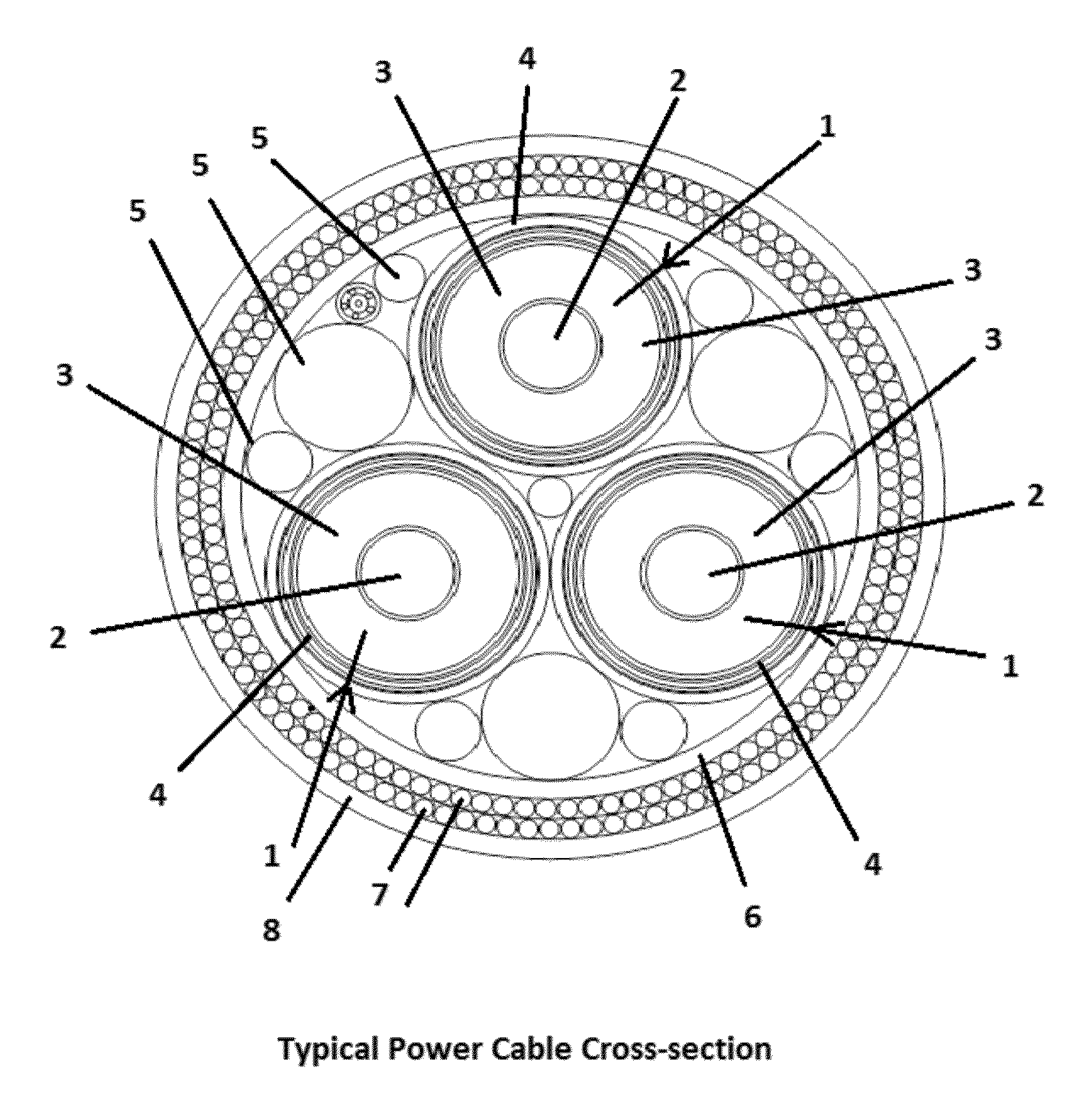Subsea Cables
- Summary
- Abstract
- Description
- Claims
- Application Information
AI Technical Summary
Benefits of technology
Problems solved by technology
Method used
Image
Examples
example 1
[0068]Copper-ETP (electrolytic tough pitch; 99.9% Cu, minimum; UNS C11000) is one of the most widely used coppers in the cable industry due to a good combination of thermal conductivity, corrosion resistance and good workability.
[0069]However, water blocking layers made of copper have been discovered to crack when subject to cyclic bending and stress. Any such crack through the water barrier constitutes failure of the ability of a cable to exclude water. Copper is, in particular, vulnerable to stress corrosion cracking (SCC), which is the cracking induced from the combined influence of tensile stress and a corrosive environment. Examples of SCC in copper are shown in FIGS. 2 and 3.
[0070]Without wishing to be limited by theory, SCC is caused by the interaction between copper and a particular substance, including ammonia or an ammoniacal compound, nitrates and nitrites. Such ammonia-based compounds may originate from other components of the cable, such as the polymeric sheath, insulat...
example 2
[0076]Test cables were fabricated and subjected to flex-fatigue qualification tests in order to compare conventional cables with cables of the present invention. Three core samples were manufactured, as follows.[0077]Core 1: conventionally made with a water-blocking layer made of Cu-ETP[0078]Core 2: made with a water-blocking barrier made of C70600. The water-blocking layer was bonded to the insulating layer.[0079]Core 3: made with a water-blocking barrier made of C70600. The water-blocking layer was not bonded to the insulating layer.
[0080]The copper used for the water-blocking layer in conventional cables is C11000 (UNS) [also known as C101 (British Standard) and CW004A (European Standard)].
[0081]All core samples featured 1 mm thick, longitudinally seam-welded water-blocking layers. Following manufacture and electrical acceptance tests, sample lengths of each core type were subjected to flex-fatigue testing.
[0082]Results of the flex-fatigue testing show that a bonded water-blockin...
embodiment 1
[0085]A cable comprising one or more cores, the or each core comprising: a conductor; an insulating layer; and a water-blocking layer, wherein the conductor, the insulating layer and the water-blocking layer each extend along the longitudinal axis of the core, wherein the insulating layer is axially external to the conductor, and the water-blocking layer is axially external to the insulating layer, and wherein the water-blocking layer comprises a copper alloy wherein the alloy comprises copper and nickel; copper and beryllium; copper and zinc; or copper, zinc and aluminium.
PUM
| Property | Measurement | Unit |
|---|---|---|
| Fraction | aaaaa | aaaaa |
| Fraction | aaaaa | aaaaa |
| Fraction | aaaaa | aaaaa |
Abstract
Description
Claims
Application Information
 Login to View More
Login to View More - R&D
- Intellectual Property
- Life Sciences
- Materials
- Tech Scout
- Unparalleled Data Quality
- Higher Quality Content
- 60% Fewer Hallucinations
Browse by: Latest US Patents, China's latest patents, Technical Efficacy Thesaurus, Application Domain, Technology Topic, Popular Technical Reports.
© 2025 PatSnap. All rights reserved.Legal|Privacy policy|Modern Slavery Act Transparency Statement|Sitemap|About US| Contact US: help@patsnap.com



